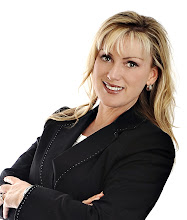FHA Commissioner Explains Logic Behind Insurance Premium Hike
________________________________________
by Adam Quinones
Last week the FHA announced it would increase annual mortgage insurance premiums by 0.25% to "bolster capital reserves", effective for case numbers ordered on or after April 18, 2011. Naturally the sudden spike in fees led to a chorus of Bronx cheers from inside the housing industry. Originator, Realtor, and Borrower feedback was generally themed along the lines of comments like "GREAT TIMING. REDUCING THE POOL OF QUALIFIED HOMEBUYERS WILL DEFINITELY BOOST THE HOUSING RECOVERY".
Please note sarcasm. And yes, capital letters were intended to imply yelling. Beyond the frustrated muttering that emanated from the trenches, a deeper explanation of this move was requested as this move seemed to make no sense at all. So in the spirit of transparency and open communication from industry leadership, FHA Commissioner David Stevens decided it was time to pen another letter offering more perspective on the issue. The following words are his, not MND's....
A Letter from the Desk of David Stevens
On February 14, I announced a new premium structure for FHA single-family mortgages, increasing the annual mortgage insurance premium (MIP) by a quarter of a percentage point (.25) on all 30-year and 15-year loans.
It is important for everyone in the industry to understand the reason for this action.
After careful consideration and analysis, we determined it was necessary to increase the annual mortgage insurance premium at this time in order to bolster our capital reserves and to help private capital return to the housing market. As many of you are aware, FHA has a Congressionally-mandated obligation to maintain a two percent capital reserve ratio in its Mutual Mortgage Insurance (MMI) fund, and to take swift and necessary actions if the reserves fall below that level.
The MMI fund has been below the two percent threshold in our last two annual actuarial reports to Congress. The FY 2010 actuarial report, submitted in November, projected that in the base case we would not get above two percent again until 2015. FHA has suffered greatly from poorly performing loans originated in years 2006 - 2008, especially seller-funded loans.
Raising the annual premium will enable FHA to increase revenues and have a positive effect on the ongoing stability of the MMI fund, which had capital reserves of approximately $3.6 billion at the end of FY 2010. Based on current volume projections, the annual MIP increase would generate an additional $2.5 - $3 billion annually.
We must balance this premium adjustment with the need to support the overall housing recovery. This quarter point increase in the annual MIP is a responsible step towards meeting the two percent threshold, while allowing FHA to remain the most cost effective mortgage insurance option for borrowers with lower incomes and lower down payments.
The changes we have implemented since I became Commissioner in July 2009 have, so far, helped shelter FHA from any external intervention which could have a negative impact on the business. Though there has been talk by some of eliminating all Government guarantees, I believe that responsible management of FHA will eliminate the need for intervention.
I recommended this increase based on FHA’s obligation to get the capital reserves back to the two percent level. And I understand the concerns of those in the industry about this increase. While I do not expect all to agree, we have made these moves to protect FHA so that it can continue its vital mission.
The monthly payment for an average loan in the FHA portfolio will increase by approximately $30 due to the increase in the annual MIP. The change impacts new loans insured by FHA on or after April 18, 2011. The upfront MIP will remain unchanged at one percent. HECM loans are not impacted by the pricing change.
For more details,
read Mortgagee Letter 11-10
-------------------------------------------
skip to main |
skip to sidebar



.jpg)
Contact Me

Industry links
- FHA loan limits
- Utah housing interest rate
- Utah housing target areas
- Utah housing income limits
- Utah housing guide
- Utah housing aquisition limits
- Rural housing property eligibility
- Rural Housing income limits
- Most of Salt Lake Down Payment Assistance
- West Jordan Down Payment Assistance
- West Valley Down Payment Assistance
- Utah County Down Payment Assistance
- Provo Down Payment Assistance
- Ogden Down Payment Assistance
- http://va.gov
- http://namb.org
- http://hud.gov
- http://fanniemae.com
- http://freddiemac.com
About The Utah Finance Guru!

- Cindee D. Stone
- Loan Officer Interview Q and A: How long have you been in the mortgage business? I have been in the mortgage industry for over 18 years. I have been very blessed and fortunate to have worked with so many wonderful people! How has the mortgage industry changed since you started, and what would you expect in the future? The mortgage industry and changed so much over the last few years. And, continues to change on a daily basis. It is very important to have a loan officer that has the experience to guide you through the process with success. What can borrowers do to insure a smooth mortgage underwriting process? The most common issue during the loan process is getting all of the documents from the borrowers. It is so different now and so much more is needed. This allows us to see the entire picture and make sure it all goes as smooth as possible. What provides you with the most satisfaction in your job as a Loan Officer? Even though the mortgage industry is harder these days, it will never take away the satisfaction and happiness with assisting someone getting into the home of their dreams! Or, helping a homeowner refinance and save money.
My Family
.jpg)
